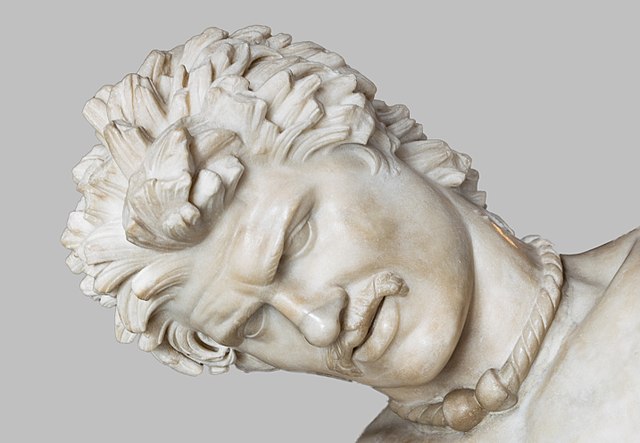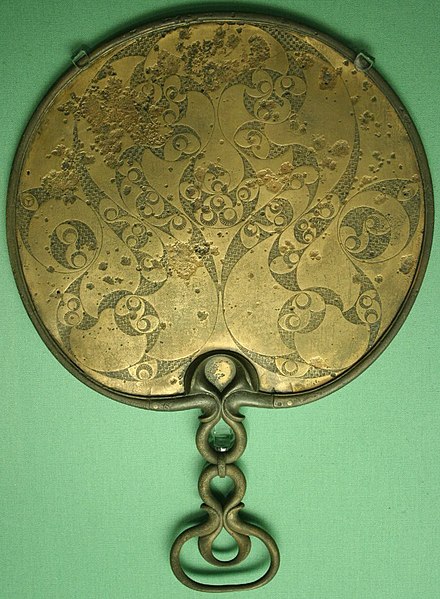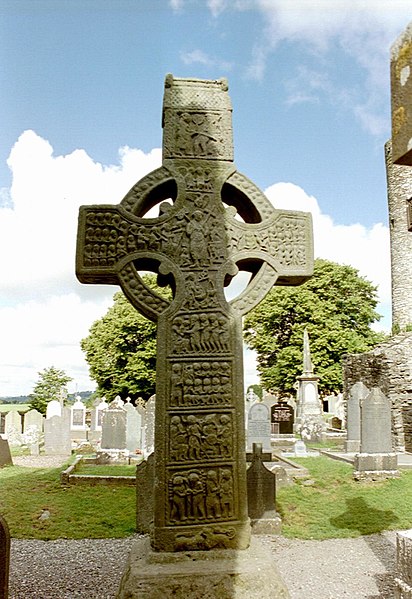A torc, also spelled torq or torque, is a large rigid or stiff neck ring in metal, made either as a single piece or from strands twisted together. The great majority are open at the front, although some have hook and ring closures and a few have mortice and tenon locking catches to close them. Many seem designed for near-permanent wear and would have been difficult to remove.
Bronze 4th-century BC buffer-type torc from France
The Dying Gaul, a Roman statue with a torc in the Capitoline Museums in Rome
Unusually complex gold spiral ribbon torc from the Stirling Hoard, Scotland.
Two uncleaned Bronze Age twisted bar torcs with flared cylinder terminals, as often found folded up, with bracelets, England
Celtic art is associated with the peoples known as Celts; those who spoke the Celtic languages in Europe from pre-history through to the modern period, as well as the art of ancient peoples whose language is uncertain, but have cultural and stylistic similarities with speakers of Celtic languages.
The reverse side of a British bronze mirror, 50 BC – 50 AD, showing the spiral and trumpet decorative theme of the late "Insular" La Tène style
Muiredach's High Cross, Ireland, early 10th century
Carved stone ball from Towie in Aberdeenshire, dated from 3200 to 2500 BC
Stone head from Mšecké Žehrovice, Czech Republic, wearing a torc, late La Tène culture








